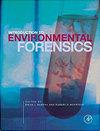Assessing highway-related metal pollution using surface soil and tree bark as indicators
IF 1.2
4区 环境科学与生态学
Q4 ENVIRONMENTAL SCIENCES
引用次数: 1
Abstract
Abstract Nigerian highway-related metal pollution was assessed using surface soil and tree bark as indicators. Metal concentrations were analyzed using an energy dispersive X-ray fluorescence spectrophotometer. The concentrations of potentially toxic metals (Co, Ni, Cu, Zn, and As) were approximately 1–2 orders of magnitude lower in the tree bark relative to surface soil, and cross-plot analysis (R 2 = 0.419) confirmed that tree bark had limited uptake for all the detected elements, suggesting that the observed concentrations in the tree bark may mostly reflect aerial pollution. Contamination factor, geo-accumulation, and other indices confirmed Ti, V, Mn, Ni, Cu, Zn, Rb, and Sr impacts to surface soil; high traffic volume and common use of poorly maintained second-hand vehicles are likely sources. Exposure to the metals via ingestion, inhalation, or dermal contact might pose health threats. Possible remediation schemes should be adopted to clean up these metals in order to ensure a sustainable environment.以地表土壤和树皮为指标评价公路相关金属污染
摘要以尼日利亚公路表层土壤和树皮为指标,对公路金属污染进行了评价。用能量色散x射线荧光分光光度计分析金属浓度。潜在有毒金属(Co, Ni, Cu, Zn和As)在树皮中的浓度相对于表层土壤低约1-2个数量级,交叉图分析(r2 = 0.419)证实树皮对所有检测到的元素的吸收有限,表明树皮中观察到的浓度可能主要反映了空气污染。污染因子、地质堆积等指标证实了Ti、V、Mn、Ni、Cu、Zn、Rb、Sr对表层土壤的影响;高交通量和普遍使用保养不良的二手车可能是来源。通过摄入、吸入或皮肤接触接触这些金属可能对健康构成威胁。应该采取可能的补救方案来清理这些金属,以确保可持续的环境。
本文章由计算机程序翻译,如有差异,请以英文原文为准。
求助全文
约1分钟内获得全文
求助全文
来源期刊

Environmental Forensics
环境科学-环境科学
CiteScore
4.90
自引率
5.60%
发文量
23
审稿时长
3 months
期刊介绍:
Environmental Forensics provides a forum for scientific investigations that address environment contamination, its sources, and the historical reconstruction of its release into the environment. The context for investigations that form the published papers in the journal are often subjects to regulatory or legal proceedings, public scrutiny, and debate. In all contexts, rigorous scientific underpinnings guide the subject investigations.
Specifically, the journal is an international, quarterly, peer-reviewed publication offering scientific studies that explore or are relevant to the source, age, fate, transport, as well as human health and ecological effects of environmental contamination. Journal subject matter encompasses all aspects of contamination mentioned above within the environmental media of air, water, soil, sediments and biota. Data evaluation and analysis approaches are highlighted as well including multivariate statistical methods. Journal focus is on scientific and technical information, data, and critical analysis in the following areas:
-Contaminant Fingerprinting for source identification and/or age-dating, including (but not limited to) chemical, isotopic, chiral, mineralogical/microscopy techniques, DNA and tree-ring fingerprinting
-Specific Evaluative Techniques for source identification and/or age-dating including (but not limited to) historical document and aerial photography review, signature chemicals, atmospheric tracers and markets forensics, background concentration evaluations.
-Statistical Evaluation, Contaminant Modeling and Data Visualization
-Vapor Intrusion including delineating the source and background values of indoor air contamination
-Integrated Case Studies, employing environmental fate techniques
-Legal Considerations, including strategic considerations for environmental fate in litigation and arbitration, and regulatory statutes and actions
 求助内容:
求助内容: 应助结果提醒方式:
应助结果提醒方式:


